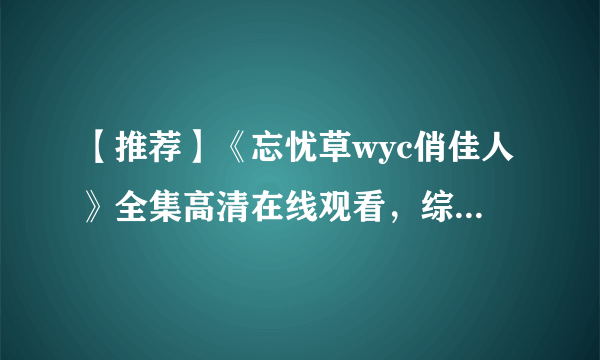
语法是一个将句子结构连接完整的重要知识点,所以语法的学习非常重要,下面是小编给大家带来的小学英语语法大全,希望能够帮助到大家!
小学英语语法大全
第1讲 字母
1、英语中共有26个字母。Aa,Ee,Ii,Oo,Uu是元音字母,Yy是半元音字母,其余是辅音字母。英语单词就是由这26个字母组合而成的。Aa和Ii可以独立成词,分别表示“一个(张……)”和“我”的意思,Ii翻译成“我”时要大写。
2、英语字母可以分为印刷体和书写体。在书、报、杂志上见到的一般都是印刷体。在四线三格上书写时应注意书写位置,可以记住以下口诀:大写字母不顶格,小写字母占满格。书写时还要注意字母的笔顺。
3、英语句子的第一个单词的首字母要大写。单词与单词之间在书写时必须保持适当的距离,一般以空出一个小写字母的宽度为宜。句子的末尾要有标点符号。
4、英语中的句号是一个实心圆点(.),省略号是三个居下的实心圆点(…),英语中没有顿号和书名号,顿号用逗号替代,书名用斜体字表示。
5、英语缩写词
PRC中华人民共和国
UN 联合国
WHO 世界卫生组织
NBA美国职业篮球联赛
KFC 肯德基
IT 信息技术
EQ 情商
CCTV 中国中央电视台
kg 千克
a.m. 上午
USA 美国
HK 香港
WTO 世界贸易组织
CBA 中国男子篮球联赛
ATM 自动柜员机
ID 身份证
CPU 中央处理器
BBC 英国广播公司
cm 厘米
p.m. 下午
UK 英国
SOS 国际求救信号
UFO 不明飞行物
VIP 贵宾
EMS邮政特快专递
IQ 智商
RMB 人民币
VOA 美国之音
No. 号码
6、 26个英语字母按照相同的元音因素进行归类:
第2讲 语音
1、音素:语音的最小单位。
英语中共有48个音素,其中元音音素20个,辅音音素28个。
2、元音:发音时气流不受阻碍。元音分为单元音和双元音两类。
单元音发音时唇形和舌位不变;双元音发音时由一个元音向另一个
元音滑动,唇形和舌位有一个变化过程,且前重后轻,前长后短。
3、辅音:发音时气流受到阻碍。辅音分为清辅音和浊辅音两类。
清辅音发音时声带不振动;浊辅音发音时声带振动。
4、音标:用来记录音素的符号。为了避免与字母混淆,音标被放在斜括号/ /内。
5、英语中的一个字母或字母组合在不同的单词中发音可能是不一样的,而相同的发音对应的字母或字母组合也可能不完全相同。
6、开音节:以元音字母结尾或以一个元音字母加一个辅音字母再加不发音的e结尾(r除外)的音节。元音字母在开音节中读长音,即该字母的名称音。
闭音节:以一个或几个辅音字母(r除外)结尾。元音字母在闭音节中读短音。
第3讲 名词
名词是指表示人和事物名称的词,可以分为专有名词和普通名词两大类。
1、专有名词:特定的人、地方、机构等专有的名称。第一个字母通常要大写。
e.g. Jim Green, New York, Bank of China,Peking University
星期、月份、节日、学科、报刊名也是专有名词。
e.g. Monday,May,Christmas,Spring Festival,Maths,China Daily
2、普通名词:表示一类人或物或抽象概念的名称。普通名词又可以分为四类:
个体名词—— 表示某类人或东西中的个体,如:student , desk
集体名词—— 表示若干个体组成的集合体,如:class , family
物质名词—— 表示无法分为个体的物质名称,如:water , rice , sand,hair
抽象名词—— 表示情感,状态,品质等抽象名称,如:love ,carelessness
个体名词和集体名词多数可以用数目来计算,称为可数名词,有单、复数形式;
物质名词和抽象名词通常无法用数目计算,称为不可数名词,一般只有一种形式。
注 意:
①集体名词被看作一个整体时,表达单数概念。
e.g. His family was well known in the town. 他家在镇里是名门望族。
②集体名词被看作若干个体的集合时,表达复数概念。
e.g. His family are waiting for him. 她的家人正在等他。
③集体名词表达多个集体时,也有复数形式。
e.g. Our village is made up of 300 families. 我们村有300户人家。
3、可数名词复数形式的构成规则:
① 一般名词在末尾直接加s,清辅音后读/ s /,浊辅音和元音后读/ z /
e.g. book-books, bag-bags, cat-cats, bed-beds
② 以s、x、sh、ch结尾,加es,读/ IZ /
e.g. bus-buses, box-boxes,brush-brushes,watch-watches
③ 以辅音字母+y结尾,变y为i,再加es, 读/ z /
e.g. baby-babies, library-libraries,factory-factories
④ 以f或fe结尾,变f或fe为v,再加es,读/ vz /
e.g. thief-thieves,knife-knives
⑤ 以o结尾,表示无生命的物体时加s, 表示有生命的物体时,加es,都读/ z /
e.g. photo-photos, piano-pianos, radio-radios, zoo-zoos
potato-potatoes,tomato-tomatoes,mango-mangoes,hero-heroes
⑥ 不规则变化
e.g. man-men
child-children
foot-feet
fish-fish
woman-women
mouse-mice
tooth-teeth
sheep-sheep
policeman-policemen
ox-oxen
goose-geese
deer-deer
▲ fish表示鱼的数量时,单复数同形;表示鱼的种类时,复数为fishes.
e.g. My cat had two fish for lunch.
You can see a lot of different fishes in the lake.
4、不可数名词一般只有原形,没有复数形式,但是可以借助量词表示一定的数量。如果表达两个或两个以上的概念时,量词需要用复数形式,不可数名词不变。
e.g. a bottle of water ,a cup of coffee,two glasses of milk ,five bags of rice
▲ 这种形式用于可数名词时,量词和可数名词都要用复数。
e.g. ten baskets of eggs
5、既可用作可数,又可用作不可数的名词:
不可数
glass 玻璃
paper 纸
iron 铁
wood 木头
beauty 美
room 空间
可数
a glass 一只玻璃杯
a paper 一份报纸、论文、文件
a iron 一个熨斗
a wood 一片森林
a beauty 一个美人
a room 一个房间
6、名词所有格
① 在英语中,有些名词可以加’s来表示所有关系,带这种词尾的名词形式称为该名词的所有格。大多数表示有生命的东西。
e.g. Tom’s book
② 如果复数名词末尾已有s,就直接加 ’ 。
e.g. the teachers’ office
③ 如果一些物品为两者共有,只需在后一个名词后加’s ;
如果为各自所有,则需在每个名词后加’s。
e.g. Lucy and Lily’s bedroom.(Lucy 和 Lily共用一个卧室)
Lucy’s and Lily’s bedrooms.(Lucy 和 Lily分别拥有各自的卧室)
④ 表示无生命的物体的名词所有格,一般与of短语连用。
e.g. a map of the world ,a photo of my family
⑤ 双重所有格:把of所有格和’s所有格结合在一起表示所有关系。
e.g. a friend of my father’s
第4讲 冠词
冠词一般用在名词的前面,对名词起限定作用,不能离开名词单独存在。
1、不定冠词a,an用在单数可数名词前面,泛指一类人或物中的任何一个。
① a用于辅音音素开头的名词之前。e.g. a bed,a computer,a “U”
② an用于元音音素开头的名词之前。 e.g. an egg,an umbrella,an hour
2、定冠词the用在单数或复数可数名词前,也可用在不可数名词前。
① 表示特指的人或物前。
e.g. The man with a flower in his hand is Jack.
② 指说话人双方都知道的人或物前。
e.g. Lily, close the door, please.
③ 在上文提到过,第二次又提到的人或物前。
e.g. There is a man under the tree. The man is called James.
④表示世界上独一无二的事物前。
e.g. The sun is bigger than the moon.
⑤用在序数词前面。
e.g. It is the first day of the new term.
⑥用在乐器名称前。
e.g. He often plays the violin at weekends.
⑦用在形容词最高级前。
e.g. Spring is the best season in a year.
⑧用在由普通名词构成的专有名词前。
e.g. I went to the Great Wall last week.
⑨ 用在国家名称的缩写前。
e.g. He is from the UK.
3、零冠词:名词前不用冠词的情况。
在季节、月份、星期、节假日、三餐、球类或棋类运动前,通常不用冠词。
e.g. have breakfast ,play basketball,play chess
第5讲 代词
1、人称代词:表示“我、你、他、她、它、我们、你们、他们”的词。
我 你 他 她 它 我们 你们 他们
主格 I you he she it we you they
宾格 me you him her it us you them
①主格一般用在句子开头做主语,通常用在动词前。
e.g. I am a student. They are cleaning the classroom.
②宾格可以用来表示动作行为的对象,一般用在动词和介词后面。
e.g. Ask her, please. Listen to me carefully.
2、物主代词:表示所有关系的代词叫物主代词。
我的 你的 他的 她的 它的 我们的 你们的 他们的
形容词性 my your his her its our your their
名 词 性 mine yours his hers its ours yours theirs
①形容词性物主代词后面一般要带上名词。如:my watch, his cousin, our school
②名词性物主代词本身就可以看作是名词,故其后不能再加名词,可单独使用。
e.g. —Is that your bike? —No. Mine is blue.
3、不定代词:没有明确指定代替某个(些)人或物的词叫不定代词。
(1)some和any
都表示“一些”,既可以修饰可数名词,也可以修饰不可数名词。
① some多用在肯定句中,any多用在否定句和疑问句中。
e.g. There are some flowers in the garden. (肯定句)
There isn’t any milk in the fridge. (否定句)
Do you have any hobbies? (疑问句)
② 在表示邀请和希望对方给予肯定回答的疑问句中也要用some。
e.g. —Would you like some coffee? —Yes, please. (邀请)
—Mum, can I have some peaches? —Sure.(希望对方给予肯定回答)
(2)both和all
① both表示“两个都……”,只指代或修饰可数名词。
e.g. We are both policemen.(强调两人)
② all表示“三个或三个以上都……”,既可指代或修饰可数名词,也可指代或修饰不可数名词。
e.g. They are all in the room.(至少三人)
(3)many和much都表示“许多”,many修饰可数名词,much修饰不可数名词。
e.g. My uncle has many stamps. There is much tea in the cup.
(4)each和every
each强调个人,指两个或两个以上的人或事物中的“每个”;every是指许多人或事物的“全体”,与all的意思相近。
e.g. I’ll buy a present for each of her parents. 我要为她的父母每人买一件礼物。
Every book in his study is interesting. 他书房里的每本书都很有趣。
(5)other 作形容词时意思是“其他的”,指尚未提到的部分,其后一般接复数名词。
e.g. We study Chinese, English, Maths and other subjects.
(6)something和everything
① something 某事;某物 e.g. I want something to drink.
② everything 一切事物;每样事物 e.g. Tell me everything about you.
(7)nobody 没有人 e.g. She likes nobody and nobody likes her.
4、疑问代词:用来表达疑问或构成疑问句的代词,一般放在疑问句的句首。
what 问什么 —What’s your name? —My name is Tom.
What colour 问颜色 —What colour is your coat? —It’s red.
what day 问星期 —What day is it today? —It’s Monday.
what date 问日期 —What date is it today? —It’s the first of June.
what shape 问形状 —What shape is the moon? —It’s round.
what…job 问工作 —What’s your father’s job? —He’s a bus driver.
what time 问时间 —What time is it? —It’s ten o’clock.
when 问时候 —When is your birthday? —It’s on the first of May.
which 问哪个 —Which is your watch, this one or that one? —That one.
where 问地点 —Where is my pen? —It’s on the floor.
who 问谁 —Who is the boy with big eyes? —He’s Liu Tao.
whose 问谁的 —Whose bag is this? —It’s Helen’s.
why 问原因 —Why are you absent today? —I’m ill.
how 问方式 —How do you go to school? —By bus.
how many 问数量 —How many books are there? —There are five.
how much 问价钱 —How much is it? —Twenty yuan.
how old 问年龄 —How old are you? —I’m twelve.
how far 问距离 —How far is it from here? —It’s about one kilometer.
how about 问情况 —I’m thirsty. How about you? —Me, too.
5、指示代词
① this(这个)、these(这些)表示在时间上或空间上较近的人或物。
② that(那个)、those(那些)表示在时间上或空间上较远的人或物。
第6讲 形容词
形容词用来修饰名词或代词,表示人或事物的性质、状态和特征。它的位置通常放在被修饰的名词前,也可以放在be动词和look、feel、taste、sound、get之后。
在英语中,形容词有三个等级,即原级、比较级和最高级。
1、表示两者“等同”时用原级,结构为:as+原级+as,表示“xx和xx一样……”
e.g. Are you as tall as your twin sister?
其否定形式结构为:not+as+原级+as,表示“xx和xxx不一样……”
e.g. I’m not as tall as you.
2、表示两者“比较”时用比较级,结构为:比较级+than,表示“xx比xxx更……”
e.g. He’s one year younger than me.
形容词比较级的构成规则:
① 一般在词尾加er
e.g. taller,longer,stronger,younger
② 以字母e结尾,只加r
e.g. late-later,nice-nicer
③ 以辅音字母+y结尾,变y为i,再加er
e.g. heavy-heavier
④ 双写末尾的辅音字母,再加er
e.g. fat-fatter,thin-thinner,big-bigger
⑤ 双音节和多音节词的比较级,在原级前加more
e.g. more beautiful,more careful
⑥ 不规则变化
e.g. good-better,many / much-more,far-farther,bad / ill-worse
3、三个或三个以上的人或物进行比较,用形容词最高级。
结构为:the + 形容词最高级 +in/of等表示范围的短语,表示“最……”。
e.g. Autumn is the best season in New York.
She is the tallest girl of our three.
第7讲 副词
1、副词是一种用来修饰动词或形容词的词,说明时间、程度、方式等概念。大多数副词都可以放在动词后面。
e.g. dance beautifully,listen carefully,sit quietly,speak loudly,very happy
2、副词的比较级变化规则与形容词比较级基本相同,以ly结尾的副词一般用more。
e.g. more carefully ,more quietly
第8讲 介词
介词又叫前置词,是一种用来表示词与词、词与句之间关系的词,它一般放在名词、代词(宾格)或动词(动词ing形式)前面。
1、in
① 在……里面。如:in the classroom
② in+颜色,穿着……颜色的衣服。如:Who’s the man in white?
③ in+语言,用某种语言说。如:What’s this in English?
④ 在上午、下午、晚上。如:in the morning,in the afternoon,in the evening
⑤ 在年、月、季节前。如:in 2008,in August,in summer
⑥ 在国家、城市和较大的地方前。如:in China,in Wuxi,in the playground
⑦ 固定搭配。 如:in the middle of(在……中间),do well in(擅长),in the day(在白天),take part in(参加),stay in bed(躺在床上),in the street(在街上)
2、on
①在……上面。 如:on the desk
②用在某一天(上、下午)前。如:on the 5th of May,on Sunday,on Monday morning
③以Day结尾的节日前。如: on Children’s Day,on New Year’s Day
④固定搭配。如:on foot(步行),on duty(值日),put on(穿上),get on(上车)
turn on(打开),on the right / left(在右边/左边),on the wall (在墙上),on Zhongshan
Road(在中山路上)
注 意:树上长的水果用on the tree;不是树上长的外来物用in the tree。
如:I can see a lot of apples on the tree. There is a boy in the tree.
3、at
①在某个时刻前。如:at seven o’clock
②在传统节日前。如:at Spring Festival,at Mid-Autumn Festival,at Christmas
③在较小的地点。如:at the bus stop
④固定搭配。如:at once(立刻,马上),be good at(擅长……),look at(看),at home(在家),at school(在学校), at weekends(在周末), at the back of(在……后部), at night(在夜晚)
4、under 在……下面 如:There is a cat under the table.
5、behind 在……后面 如:There is an umbrella behind the door.
6、near 靠近…… 如:There is a park near my house.
7、beside 在……旁边 如:The students are standing beside the teacher.
8、next to 紧靠……旁边 如:The teachers’ office is next to our classroom.
9、before (时间上)在……之前 如: before class(上课前)
10、after (时间上)在……之后;依照
固定搭配: after class(课后),after school(放学后),look after(照看),run after(追赶),read after me(跟我读)
11、between 在两者之间 如:There are some trees between Building A and Building B.
12、by 乘某种交通工具 如:by bus,by plane,by the way(顺便说一下)
13、from
①be from = come from(来自……) 如:Mr Smiths is/comes from Australia.
②from…to…(从……到……)We go to school from Monday to Friday.
14、to 到、去…… 如:Let’s go to the zoo. 固定搭配:write to(给xx写信)
15、about 关于;大约
如: I want to buy a book about animals. It’s about one kilometer away.
16、for 为、给…… 如:Here’s a letter for you. What’s for breakfast?
固定搭配:look for (寻找),wait for(等候)
17、with
①与……一起。如:I’ll go shopping with my mother.
②具有某种特征。如:Who’s the boy with big eyes?
③help... with... 在某方面帮助某人 如: Can you help me with my English?
④play with... 和……一起玩;拿……玩 如:play with me,play with a yo-yo
18、in front of 在……前面 如:There is a tree in front of the classroom.
in the front of 在……前部 如:There is a blackboard in the front of the classroom.
19、along 沿着,顺着 如:Go along this street.
20、as 作为 如:What would you like as a birthday present?
21、out of 从……出来;往……之外 如:The dog is running out of the house.
22、of ……的,属于…… 如:a map of China ,a map of the world
23、off 离开,在……之外 如:keep off the grass(勿踏草坪),get off(下车)
24、up 向上 如:stand up(起立),pull up carrots(拔胡萝卜)
25、down 向下 如:sit down(坐下), jump up and down(上下跳)
第9讲 数词
1、基数词:表示数目多少。
1 one 11 eleven 21 twenty-one
2 two 12 twelve 22 twenty-two
3 three 13 thirteen 30 thirty
4 four 14 fourteen 40 forty
5 five 15 fifteen 50 fifty
6 six 16 sixteen 60 sixty
7 seven 17 seventeen 70 seventy
8 eight 18 eighteen 80 eighty
9 nine 19 nineteen 90 ninety
10 ten 20 twenty 100 hundred
注意:数字“0”可以读作“zero”,也可以读作字母“o”。
2、序数词:表示顺序先后。
1st first 11th eleventh 21st twenty-first
2nd second 12th twelfth 22nd twenty-second
3rd third 13th thirteenth 30th thirtieth
4th fourth 14th fourteenth 40th fortieth
5th fifth 15th fifteenth 50th fiftieth
6th sixth 16th sixteenth 60th sixtieth
7th seventh 17th seventeenth 70th seventieth
8th eighth 18th eighteenth 80th eightieth
9th ninth 19th nineteenth 90th ninetieth
10th tenth 20th twentieth 100th hundredth
基数词变序数词记忆口诀:
一、二、三,需要记,八去t,九省e,ve结尾时,f来代替,
ty结尾时,y变ie,再加th,若是几十几,前基后序别忘记。
第10讲 连词
连词,顾名思义,是一种起连接作用的词。
1、and “和”,表示并列关系。
如:There are some desks and chairs in the classroom.
2、but “但是”,表示转折关系。
如:You can skate well, but I can’t .
3、or “还是”,表示选择关系。
如:Would you like a glass of milk or a cup of tea?
注 意:在疑问句或否定句中,当表示并列关系时,不用and,而用or。
如:Do you have any brothers or sisters?
I don’t have any brothers or sisters.
4、than “比”,表示对比关系。
如:Su Hai jumps farther than Su Yang.
5、because “因为”,表示因果关系。
如:I like summer best because I can go swimming.
6、so “所以”,表示结果关系。
如:Helen was ill , so she didn’t go to school yesterday.
标签:英语语法,小学





















